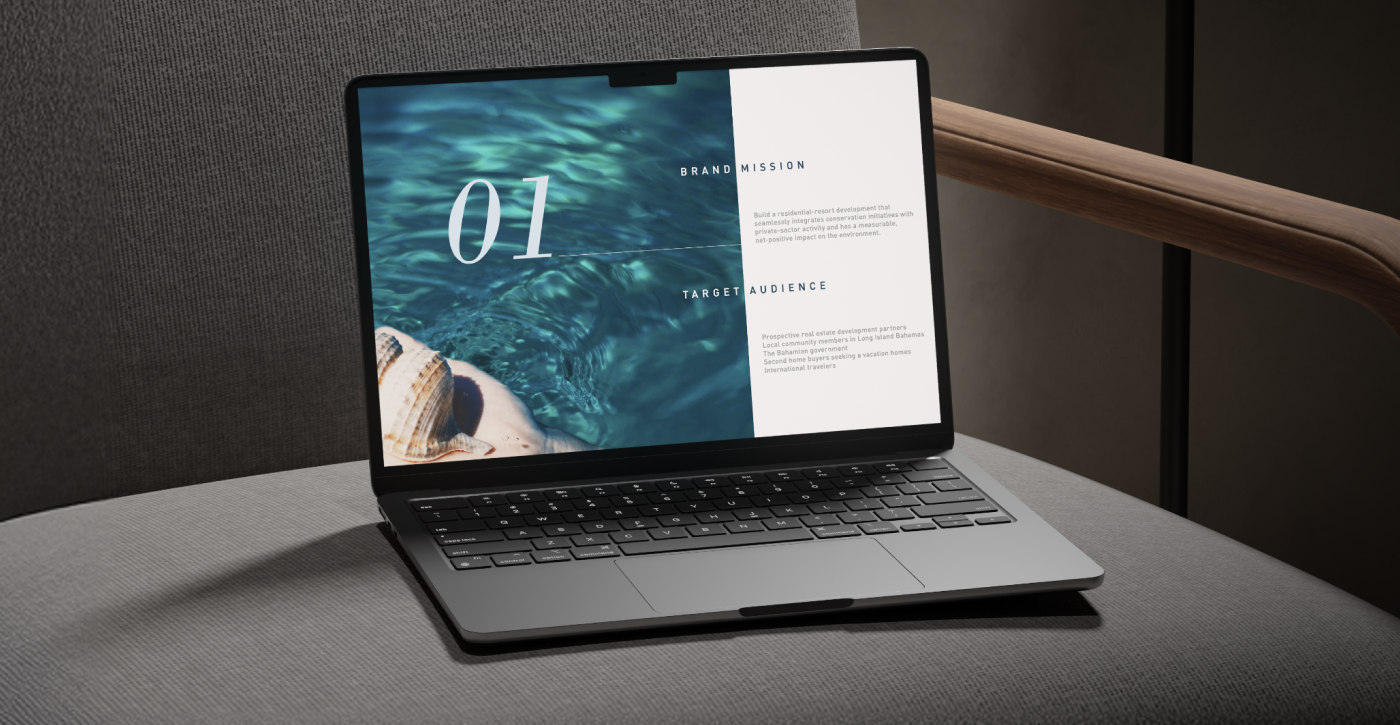
It’s Monday morning. You wake up, look around you, and find that your bed is in the kitchen. You look around, confused, and find that your sink is filled with socks. Upstairs, your oven sits balanced on your bookcase while all your lamps are crammed into the ensuite. You grab a cereal bar, shake your head, and just leave the mess as it is.
The next morning, you wake up on the roof. Where your lamps, oven socks and all the rest of your household items are is entirely a mystery.
Although this may seem like the premise of an early 2000s Will Ferrel film, it’s actually an ideal example of the disorganized creative process that many companies have.
Many businesses, especially fast-growing ones, have a highly informal and often chaotic approach to storing files, assets and creative material. We’ve all been there, trying to figure out where that creative asset you commissioned six months ago is, only to find out it was only saved on the intern’s laptop, and said intern is now long gone. Now, you have to reach out to your creative team again, and your project is going to be behind.
So, how do you make sure you wake up in the morning knowing exactly where you’re going to be? Simply put, by using Digital Asset Management Tools, or DAM for short.
Digital Asset Management: The Benefits
First off, let’s define Digital Asset Management (DAM):
Digital Asset Management is a system for organizing, storing and retrieving digital assets such as images, videos, audio files and documents. It allows users to easily find and use the assets they need, while also providing a level of organization and control to ensure that assets are used properly and securely.
In a business, especially those with a strong marketing or creative focus, DAM tools are vitally important. They can save you hours of work, along with saving your company money in efficient work processes and more effective creation workflows.
Design teams are notoriously overworked in most businesses. When marketers are asking them for new social media creatives, sales for new slide decks and CEOs for entire brand redesign projects, having a DAM system set up is the only way to successfully stay on top of their work.
Burnout is a very real thing in creative industries, and we’ve written extensively about it. Having a successful design team is, of course, largely about having effective and talented designers, but a larger and more unspoken aspect of that success is in automation, organization and delegation. By establishing a clear and linear workflow system where every stakeholder knows exactly where everything is stored, possibly through the use of asset management software, you can significantly increase the turnaround time of your creative teams.
How DAM Can Help Your Business
1. Efficiency and Productivity
We’ve mentioned this above, but it cannot be understated. Let’s take writing this blog article as an example:
Without a DAM system, it would just be me reaching out to people in Slack messages, saving this article in my own Google Drive, and frantically trying to keep tabs on all the assets I’ve requested along with notifying the rest of the team of when it will be published. There will be countless roadblocks, with me scouring through an image database I technically shouldn’t have access to just to find a placeholder image. Eventually, the article will get delayed, and your content structure will get backed up.
Having oversight, documentation and full collaboration on each step of writing this article makes things far, far easier. With our DAM system, I knew exactly where our SEO research was, how the design team is coming along with the headers, when our blog manager needs it by (hey Cam!) and countless other steps of the process.
It also ensures that anyone else in our department can see the status of every creative project our team is working on, letting them see a long-term picture of our content and creative strategy.
This is one of the unsung benefits of a DAM system, and one we at Superside are reaping the benefits of.
2. Enhanced collaboration
At Superside, like at many other companies, we have a comprehensive content strategy that covers a wide range of audiences, mediums and strategies. With a collective DAM approach, each department can see exactly what every other contributor is working on and if they can repurpose or recycle their creative assets.
With our blog, video, events, community, social media, email and product teams all working together (yet remotely), it is vitally important that we’re able to make the most out of the assets and talent that we have.
This not only makes it easier for our content teams to use creative content from other departments, but it also makes it far faster for our designers to repurpose or revitalize our branded content for each department. Instead of working in silos and effectively creating unique content for each medium, our creative team developed a centralized asset management system that significantly reduces turnaround time.
This also significantly reduces the amount of pressure on your creative team, allowing them to focus on more important, higher-level projects.
3. Nothing Gets Lost
It happens; laptops get left on trains, servers go down, vengeful interns hit ctrl+all+delete. Without a solid digital asset management system, your business could effectively go under in a matter of minutes from a poor storage system.
Having an effective DAM system is imperative to avoid this. By having a comprehensive and secure system of storage, you can ensure that not only do you know exactly where your files are stored virtually, you can also see who has access to them, who has edited them, or who hasn�’t worked on them yet.
As an added benefit, a quality DAM system can show you not just what you’re missing in the past, but also what you may be missing currently. This brings us to our next point:
4. A 360° view of your content strategy
Every company has some kind of content gap. No matter how effective your content team is at creating and curating quality work, regardless of the medium, there will be gaps. With a DAM system, you can get a holistic view of your previously made content and digital assets. You may realize you’re missing a really effective piece of the puzzle, allowing you to create an even more effective content strategy.
Then, once you’ve noticed this content gap, the DAM system can help you get it created and approved far faster than a traditional content workflow.
5. Streamlining the approval and distribution process
By having all of your assets in one place, your creative management team can provide approval and feedback to your design team far faster and more effectively than a mangled mess of Slack messages and emails.
Additionally, once it’s created, the design team can notify the content team immediately, allowing them to add it to their work seamlessly.
Okay, so Digital Asset Management systems sound like a no-brainer, right? But which one do you choose?
The Different Types of DAM Software
Digital Asset Management (DAM) software comes in many forms, each with its own set of features and capabilities to meet the specific needs of different organizations. Here are a few of the main types of DAM software:
Cloud-based
These systems are hosted on remote servers and accessed via the internet. The main advantage of cloud-based DAM tools is that it allows users to access assets from anywhere with an internet connection. This makes it ideal for organizations with employees working remotely or in different locations. Additionally, cloud-based systems with cloud workload protection platforms offer robust security and require less maintenance and setup than on-premise options.
On-premise
These systems are installed on a company's own servers and are typically used by larger organizations with a dedicated IT team. On-premise DAM systems offer more control over the system and data, but they also require more maintenance and setup.
Open-source
These are free, community-driven systems that are available for anyone to use and customize. Open-source DAMs are great for organizations with a limited budget, but they may not offer the same level of support and functionality as paid options.
Integrated
Some DAM software can be integrated with other systems such as Content Management Systems (CMS) or e-commerce platforms. These integrated systems allow for seamless asset management within the context of a larger system. This type of integration can be useful for businesses that need to manage digital assets in a specific context, such as managing product images within an e-commerce platform.
Ultimately, the choice of DAM software will depend on the specific needs and resources of an organization. It is important to evaluate different options and determine which one best fits the organization's needs before making a final decision.
Read More: How DAM Tools Can Give Your Team More Creative Freedom
How to Choose the Right DAM Software for Your Business
Choosing the right Digital Asset Management (DAM) software for your business can feel like a daunting task, but it doesn't have to be. There are a few key factors to consider when making your decision.
First, think about what types of assets you'll be storing in the DAM. Will you mainly be working with images, videos, audio files, or documents? Different DAM systems will have different capabilities when it comes to handling different types of assets, so make sure you choose one that can handle everything you need it to.
Next, consider how many users will need access to the DAM system. If you have a small team, a basic system will likely suffice. But if you have a large number of users, you'll want to choose a system that can handle multiple users and offers collaboration features.
Another important factor to consider is budget. There is a wide range of DAM systems available, from free open-source options to expensive enterprise-level systems. Determine what your budget is and look for a system that fits within it.
Finally, think about your organization's future growth and scalability. As your business grows, your DAM system will need to grow with it. Look for a system that can easily scale up as your business expands.
By keeping these factors in mind, you'll be able to choose the right DAM software that fits your business needs and budget. Remember, there's no one-size-fits-all solution, so take your time and evaluate different options before making a final decision.
The Effective Cost of Digital Asset Management
When looking at Digital Asset Management systems, it’s important not to look at the amount of money spent, but the number of hours saved.
These systems are designed to allow your design and marketing teams to work together more efficiently, allowing them to focus on higher-level projects and strategies without getting bogged down in trying to find that image for the 45th time.
Many professionals outside of the creative industry don’t realize how much time is taken up by storing, allocating and creating workflows for particular projects. Something that is also increasingly common in the creative world is focusing on smaller, more niche elements of a larger project, often with considerable time spent.
Think about it this way: your company needs a brand redesign, but your creative team is also tasked with developing, managing and storing all the other minor creative assets your company needs: blog headers, newsletter graphics, ad graphics. With all this time spent on minor projects, it��’s hard to maintain pace on the larger strategy.
DAM systems can help streamline these minor projects significantly, allowing you to modulate the creative process in many aspects, saving time for all parties involved.
DAM systems can certainly help ease the load for your creative and marketing teams, but if you need a more considerable boost in your creative team, Superside can provide you with the tools and design you need.












